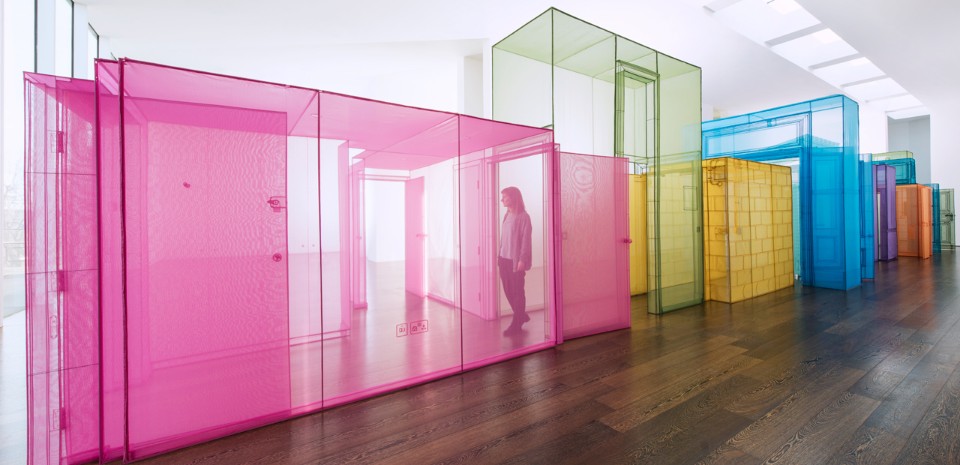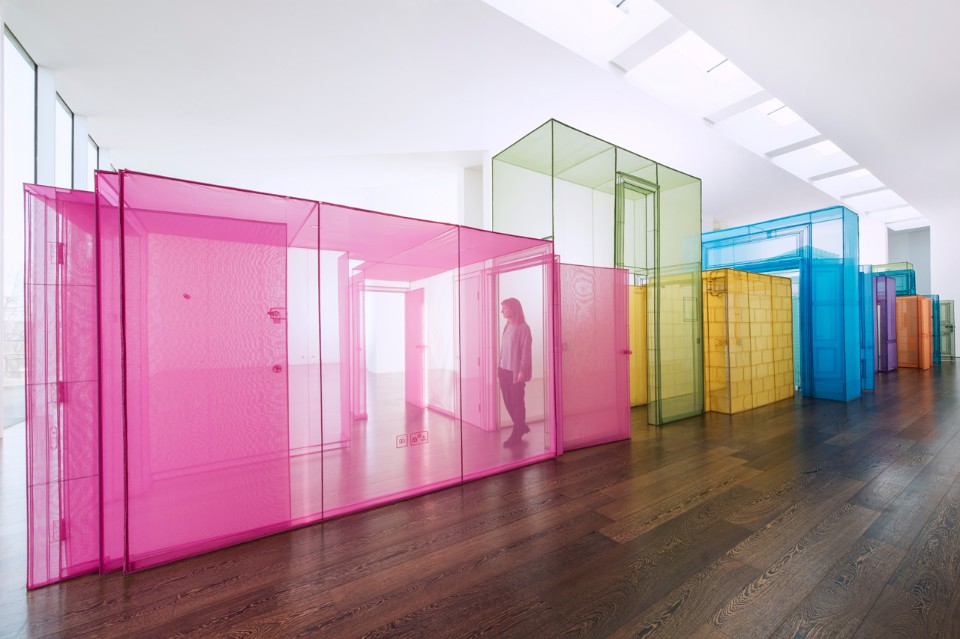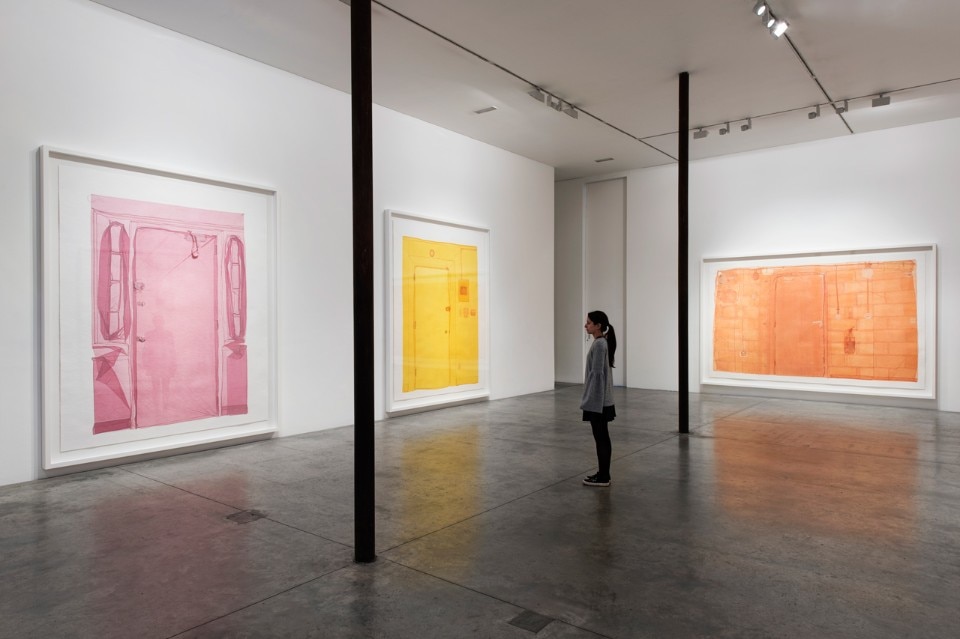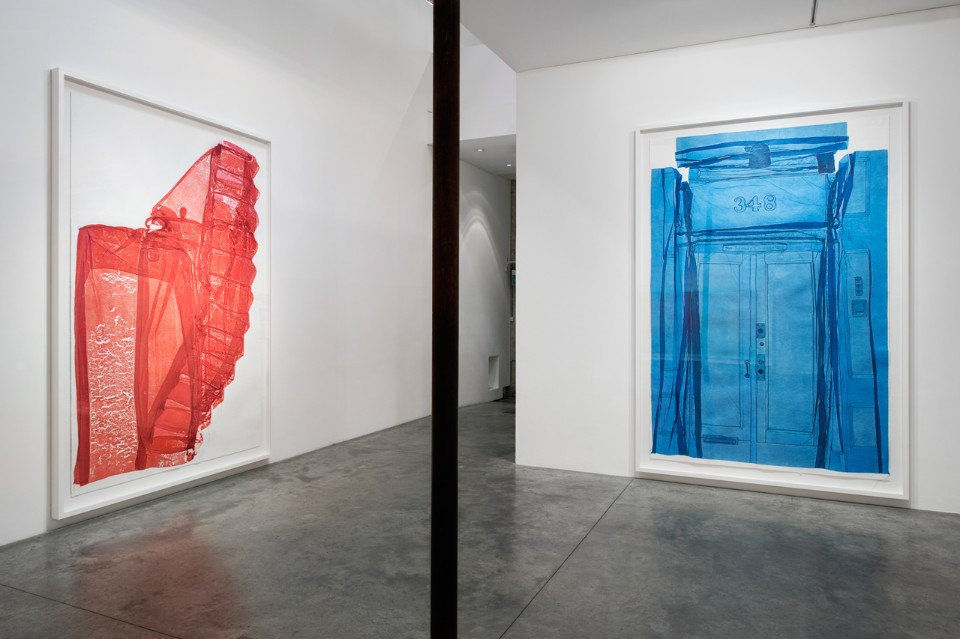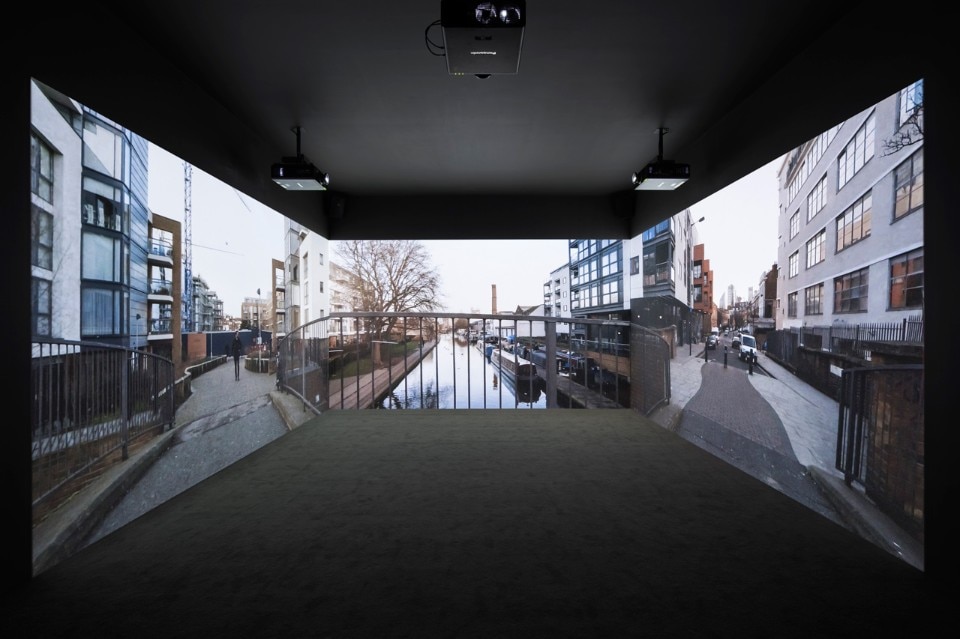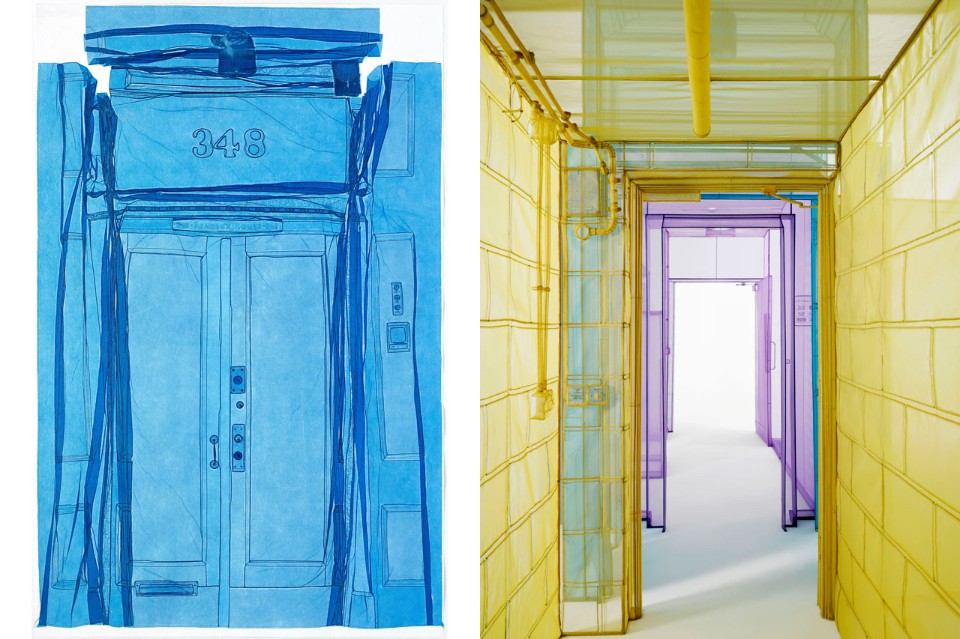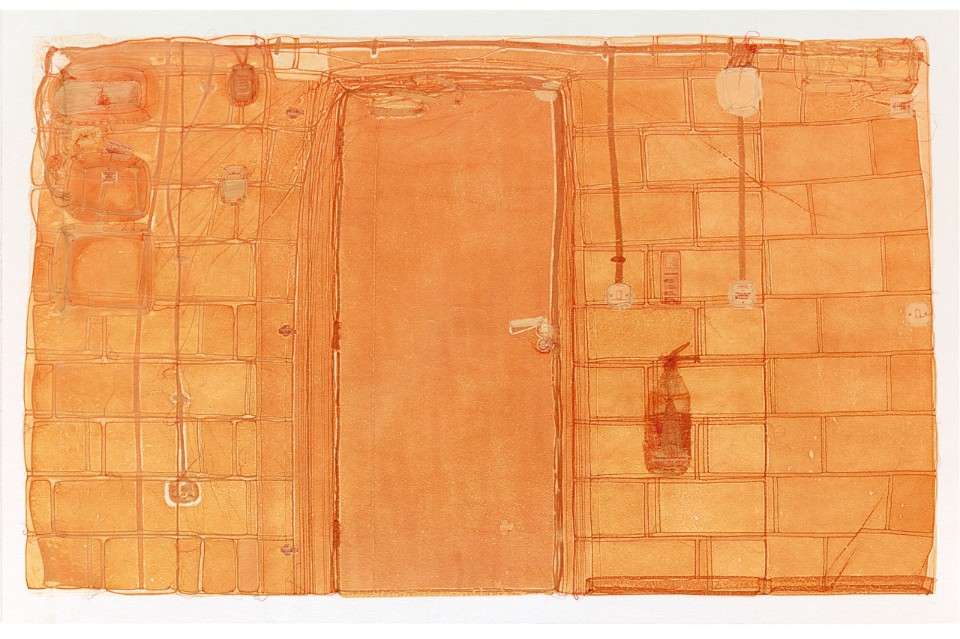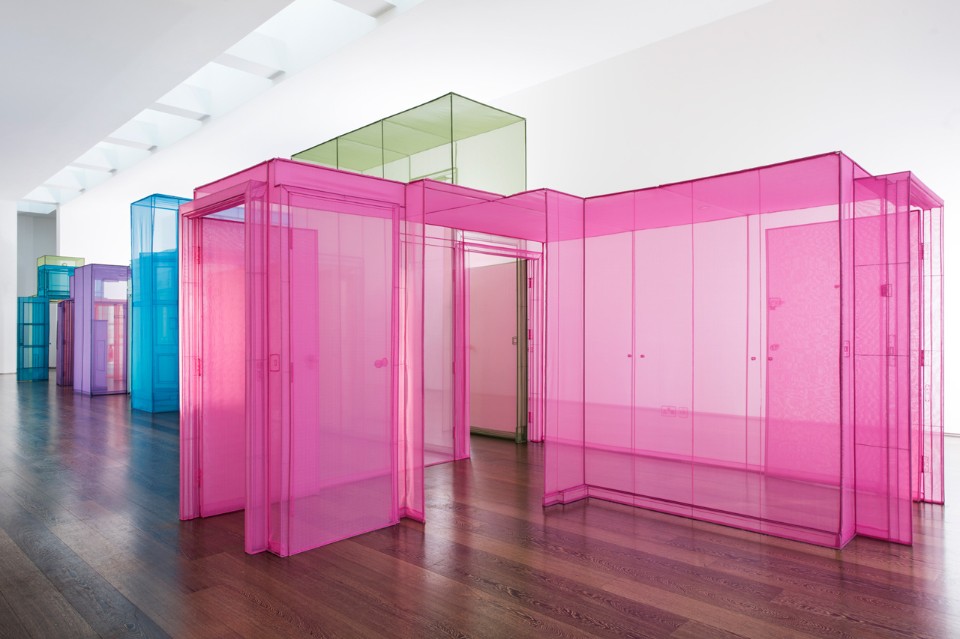
These ideas are further conveyed in his Hub works, where transitory, connecting spaces between rooms, such as vestibules and corridors, speak metaphorically about movement between cultures and the blurring of public and private, as well as reflecting on the passage of the artist’s own life. “I see life as a passageway, with no fixed beginning or destination,” says Suh. “We tend to focus on the destination all the time and forget about the in-between spaces. But without these mundane spaces that nobody really pays attention to, these grey areas, one cannot get from point a to point b.” The artist’s move to London provides a thematic and emotional touchstone for this exhibition, his first at Victoria Miro. Hub, London Apartment, 2015, a partial representation of Suh’s London home, is joined by other Hubs to create a walkthrough configuration of nine structures occupying the 25-metre-long Gallery II, Wharf Road. To move through these delicately precise, weightless impressions is to experience a distinct emotional register, a sense of being in flux, crossing boundaries and moving between psychological states.
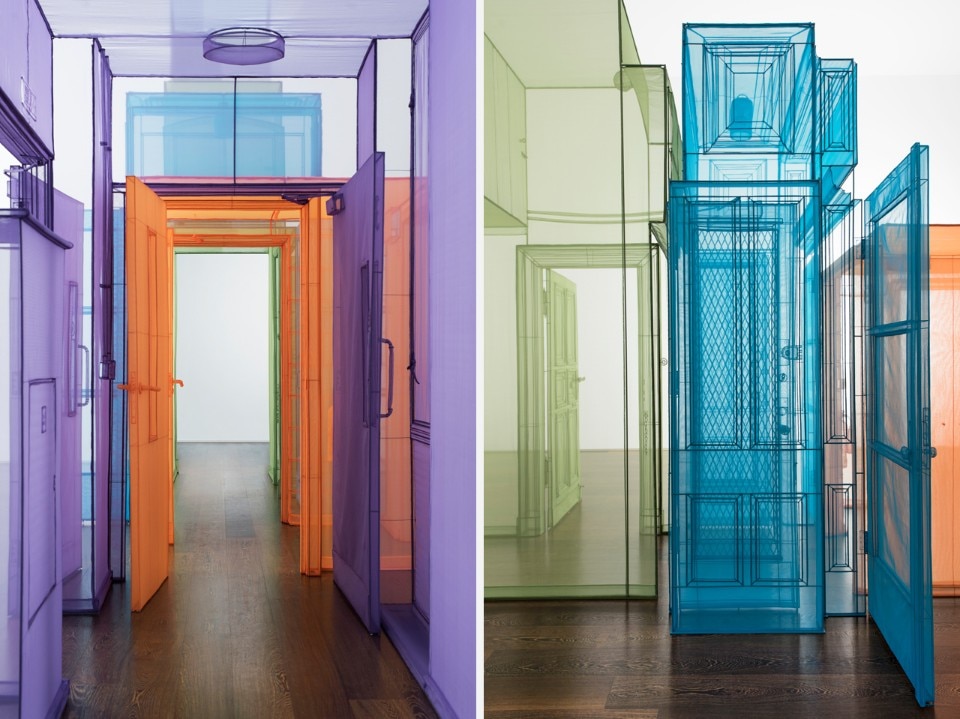
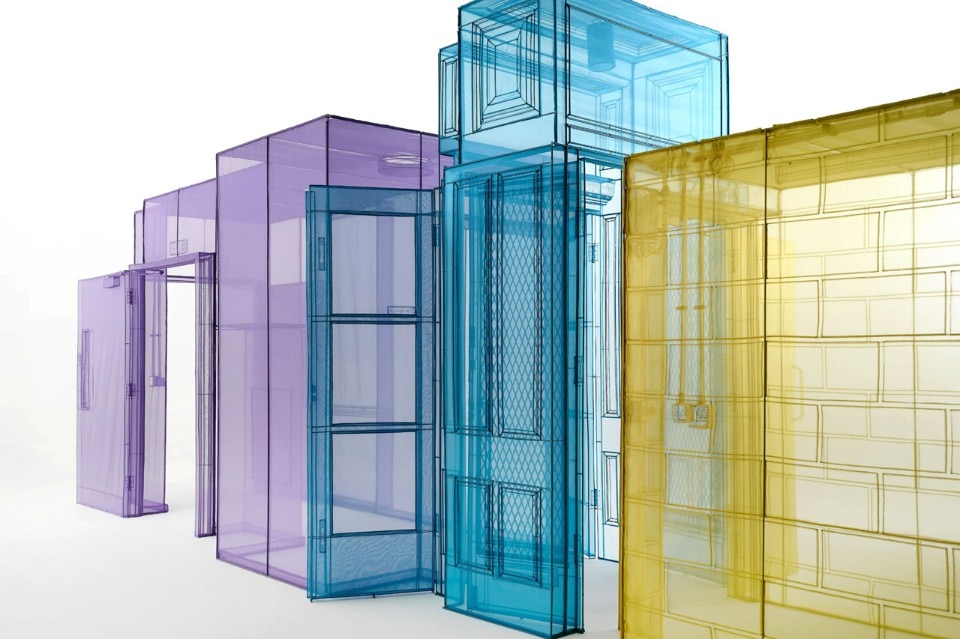
Suh’s permanent departure from his New York residence after twenty years has also inspired a new set of lightbox works on display in Gallery I. Constructed from white fabric, the Exit Series, 2016 – smaller household fixtures and fittings such as lightbulbs, doorknobs and entry buzzers – appear ghostly, like the sloughed skin of a reptile. The exhibition also introduces a new process, developed during a residency at STPI – Creative Workshop & Gallery, Singapore, in which Suh’s signature architectural pieces are compressed into large-scale two-dimensional ‘drawings’. Using gelatin tissue, the works are sewn in the same way as Suh’s architectural fabric pieces. Once immersed in water, however, the gelatin dissolves, fusing with the paper to leave an image in which the threads appear like a skeletal framework against the coloured form of the object. Residual yet highly visceral, these works draw parallels between architectural space, clothing and the body, making explicit Suh’s fascination with the interconnected spaces we inhabit while continuing his career-long investigation into the porous boundaries of identity.
until 18 March 2017
Do Ho Suh: Passage/s
Victoria Miro
16 Wharf Road, London


